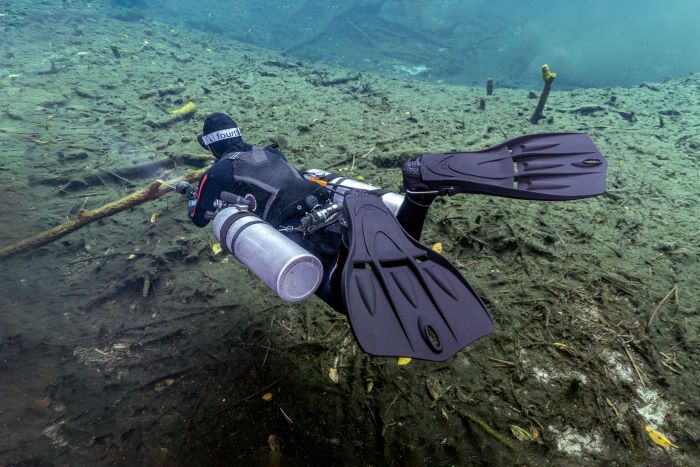As a seasoned diving instructor with over 15 years of experience, I’ve seen countless divers experiment with different gear configurations. One question that frequently surfaces is: are freediving fins beneficial for scuba diving? The answer, as with most things in diving, is nuanced. Freediving fins, characterized by their extended length and often softer blade material, offer potential advantages but also present certain drawbacks when used for scuba diving. Let’s delve into the specifics.
The Advantages: Efficiency and Glide
The primary appeal of freediving fins for scuba diving lies in their efficiency. The longer blade allows for a greater displacement of water with each kick, translating to:
- Reduced Effort: Less leg fatigue, especially during long dives or against currents.
- Improved Air Consumption: More efficient propulsion means less exertion, leading to lower air consumption.
- Enhanced Glide: The extended blade provides a smoother, more streamlined glide through the water.
These benefits can be particularly attractive for divers who prioritize energy conservation and extended bottom times. Imagine effortlessly cruising along a reef, covering more ground with less effort. That’s the promise of freediving fins.
Tip: When considering freediving fins for scuba, pay close attention to the blade stiffness. Softer blades are generally preferred for recreational diving, while stiffer blades are better suited for strong currents or technical diving.
The Disadvantages: Maneuverability and Control
However, the advantages of freediving fins come with certain trade-offs. The increased length can significantly impact maneuverability, especially in confined spaces. Consider these potential drawbacks:
- Reduced Agility: Difficult to execute quick turns or precise movements.
- Increased Risk of Contact: Longer fins are more prone to bumping into the reef or other divers.
- Potential for Overexertion: If not properly trained, divers may overcompensate with powerful kicks, negating the efficiency benefits.
Furthermore, the softer blade material, while contributing to efficiency, can feel less responsive than traditional scuba fins, particularly when dealing with strong currents.
Consider the Environment
The suitability of freediving fins also depends heavily on the diving environment. In open water with minimal obstacles, the benefits may outweigh the drawbacks. However, in wrecks, caves, or areas with delicate coral formations, the reduced maneuverability can pose a significant risk.
Training and Adaptation
If you’re considering switching to freediving fins for scuba diving, proper training and adaptation are crucial. Start with shallow, open water dives to familiarize yourself with the feel and handling of the longer blades. Practice different kicking techniques and focus on maintaining a smooth, controlled rhythm.
It’s also essential to adjust your buoyancy control to compensate for the different fin characteristics. You may need to fine-tune your weighting to achieve optimal trim and balance.
Important: Never attempt to use freediving fins for scuba diving without proper training and supervision. Seek guidance from an experienced instructor who can provide personalized feedback and ensure your safety.
FAQ: Freediving Fins for Scuba Diving
Q: Can I use any freediving fin for scuba diving?
A: Not necessarily. Consider the blade stiffness and length. Softer, shorter blades are generally more suitable for recreational scuba diving.
Q: Will freediving fins automatically improve my air consumption?
A: Not automatically. You need to adapt your kicking technique and learn to use the fins efficiently to see a noticeable improvement.
Q: Are freediving fins suitable for all diving environments?
A: No. They are less suitable for confined spaces or areas with strong currents.
Q: What are the best freediving fins for scuba diving beginners?
A: Look for fins with a softer blade and moderate length. Brands like Mares and Cressi offer models that are well-suited for beginners.
Key improvements and explanations:






